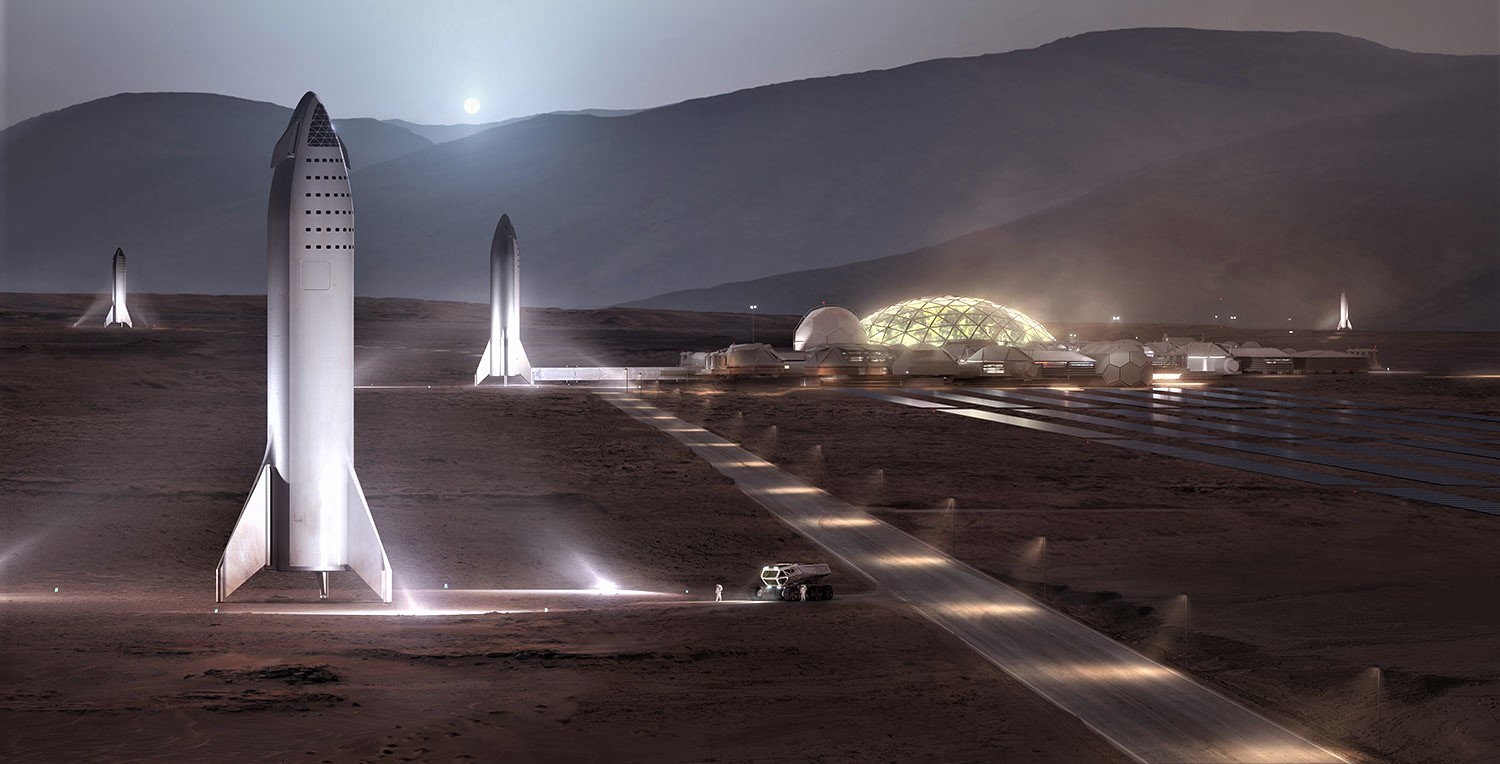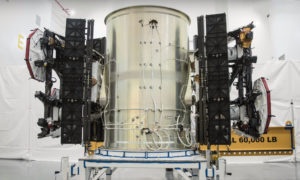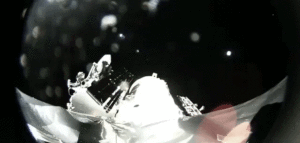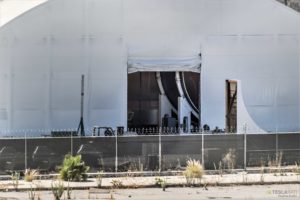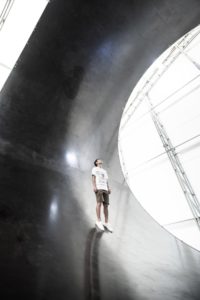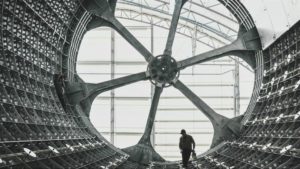Bloomberg reports that SpaceX has approached Goldman Sachs in hopes of arranging a $500M leveraged loan, potentially opening up an entirely new avenue of capital for the company as it approaches inflection points in its two largest development programs, the Starlink internet satellite constellation and its next-generation BFR rocket and spaceship.
In the United States, the market for leveraged loans (a form of debt capital) has experienced unprecedented growth in 2018, soaring past $1.3 trillion total. Unlike borrowers typically pursuing leveraged loans, SpaceX has little to no debt to speak of and is likely either financially stable or even healthily profitable.
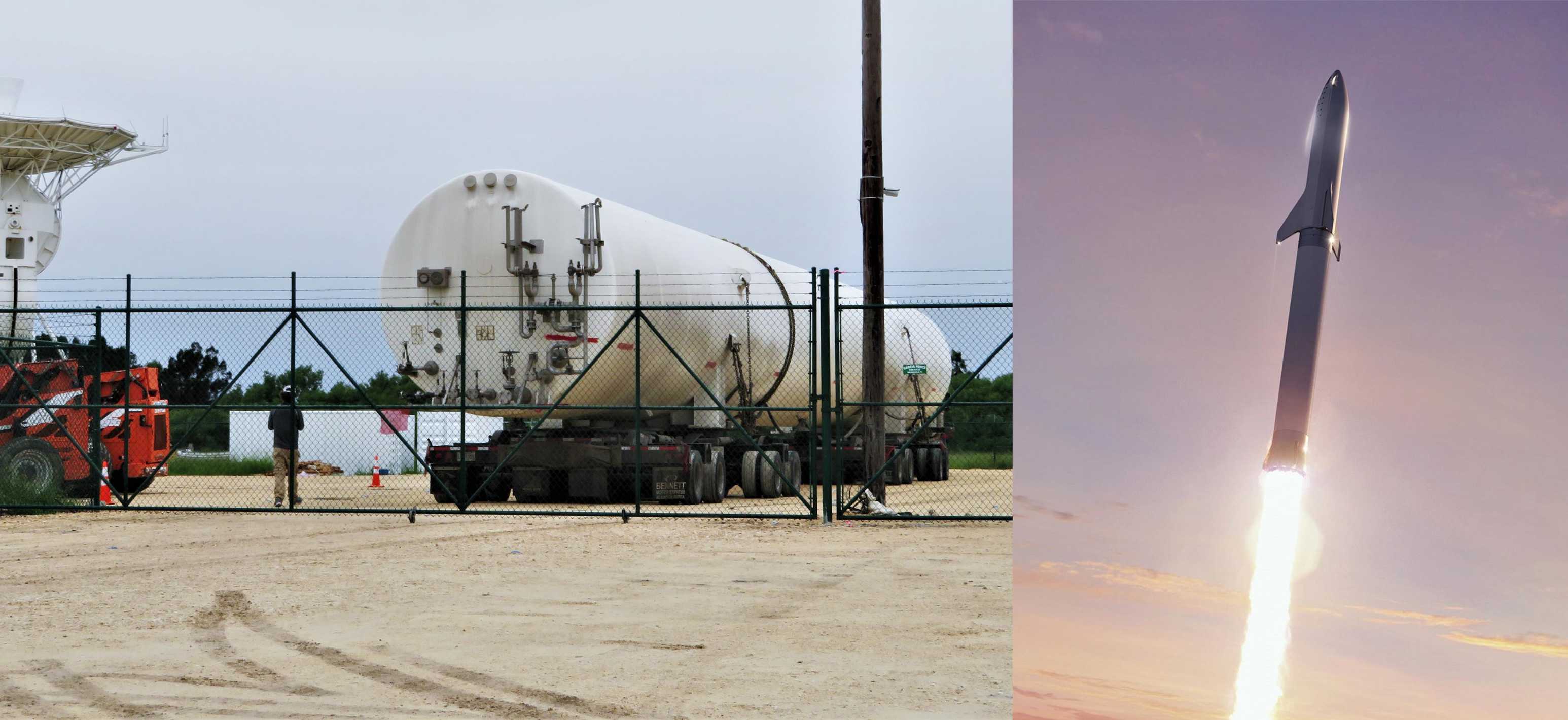
The fact that SpaceX is not already heavily leveraged (i.e. lots of debt) indicates that the company’s interest in this type of loan – versus something more like traditional equity sales – arises from the need for capital to fund major one-time investments that are likely to peak within the next 2-3 years, if not sooner. Leveraged loans are typically classified as riskier investments due to the tendency for borrowers to already have plenty of debt: in the case of SpaceX, it’s clear that that risk derives more from the fundamentally risky nature of space-related endeavors.
Success is not guaranteed even if SpaceX has plenty of funds to invest in satellite constellation or rocket R&D, while major one-time expenditures like the construction of a new launch pad and test facility for BFR also carry the risk of potentially catastrophic destruction in the event of a vehicle failure during testing or launch, one case that was proven out during the September 2016 on-pad failure of a Falcon 9 rocket, multiple times smaller than BFR. Leveraged loans still are likely to work in SpaceX’s favor, drawing in investors already willing to accept that inherent risk when the potential rewards of success are immense.
“The benefits of this maiden voyage [into leveraged loan borrowing] are clear: SpaceX should have ample funding needs for many years to come as it keeps Mars in its sights. Crucially for Musk, loans are more private than most other forms of capital raising — and very hard to short.”
Starlink
While the exact status of SpaceX’s major development programs is not public, it can be reasonably intuited that the company’s Starlink constellation is likely in the process of restructuring an R&D-centered experimental wing into something closer to a factory. Such a factory will be an absolute necessity if SpaceX intends to mass-produce high-performance smallsats at a truly unprecedented scale: ~4500 satellites make up the first wave of the constellation alone, while nearly ~7500 more would eventually follow to allow Starlink to truly blanket the world with fast internet access.
- SpaceX’s first two Starlink prototype satellites are pictured here before their inaugural Feb. 2018 launch, showing off a utilitarian design. (SpaceX)
- One of the first two prototype Starlink satellites separates from Falcon 9’s upper stage, February 2018. (SpaceX)
BFR
SpaceX’s Big F____ Rocket – deemed Big Falcon Rocket (BFR) in public statements – is no less capital-hungry. Aside from major investments in tooling and the lengthy and return-free process of designing such a large, complex, and advanced launch vehicle, SpaceX is in the process of preparing a site for a dedicated BFR factory at Port of Los Angeles. Currently housed in a huge temporary tent, it’s already clear that spaceship prototype fabrication could benefit greatly from workspace expansions and a more controlled environment. Long-term, such a factory will be a basic necessity for SpaceX to begin true serial production of BFR boosters and spaceships.
In South Texas, SpaceX is also beginning the expensive process of constructing some combination of a launch pad and testing facility dedicated to the BFR program. Most recently, two massive propellant storage tanks have arrived at a nearby facility at the same time as construction is beginning in earnest on the circa-2014 site of SpaceX’s proposed launch pad.
- SpaceX’s initial BFR work is being performed in a giant temporary tent located at Port of LA. (Pauline Acalin)
- Yusaku Maezawa stands on the first BFR composite tank/fuselage section prior to his Sept. 17 announcement. (Yusaku Maezawa)
- SpaceX’s massive BFR mandrel, used to mold its composite structures. (SpaceX)
Ultimately, the company could benefit immensely from an infusion of free capital, if for no other reason than to expedite critical infrastructure investments that will become the foundation for Starlink and BFR.
For prompt updates, on-the-ground perspectives, and unique glimpses of SpaceX’s rocket recovery fleet check out our brand new LaunchPad and LandingZone newsletters!
News
Tesla cleared in Canada EV rebate investigation
Tesla has been cleared in an investigation into the company’s staggering number of EV rebate claims in Canada in January.

Canadian officials have cleared Tesla following an investigation into a large number of claims submitted to the country’s electric vehicle (EV) rebates earlier this year.
Transport Canada has ruled that there was no evidence of fraud after Tesla submitted 8,653 EV rebate claims for the country’s Incentives for Zero-Emission Vehicles (iZEV) program, as detailed in a report on Friday from The Globe and Mail. Despite the huge number of claims, Canadian authorities have found that the figure represented vehicles that had been delivered prior to the submission deadline for the program.
According to Transport Minister Chrystia Freeland, the claims “were determined to legitimately represent cars sold before January 12,” which was the final day for OEMs to submit these claims before the government suspended the program.
Upon initial reporting of the Tesla claims submitted in January, it was estimated that they were valued at around $43 million. In March, Freeland and Transport Canada opened the investigation into Tesla, noting that they would be freezing the rebate payments until the claims were found to be valid.
READ MORE ON ELECTRIC VEHICLES: EVs getting cleaner more quickly than expected in Europe: study
Huw Williams, Canadian Automobile Dealers Association Public Affairs Director, accepted the results of the investigation, while also questioning how Tesla knew to submit the claims that weekend, just before the program ran out.
“I think there’s a larger question as to how Tesla knew to run those through on that weekend,” Williams said. “It doesn’t appear to me that we have an investigation into any communication between Transport Canada and Tesla, between officials who may have shared information inappropriately.”
Tesla sales have been down in Canada for the first half of this year, amidst turmoil between the country and the Trump administration’s tariffs. Although Elon Musk has since stepped back from his role with the administration, a number of companies and officials in Canada were calling for a boycott of Tesla’s vehicles earlier this year, due in part to his association with Trump.
News
Tesla Semis to get 18 new Megachargers at this PepsiCo plant
PepsiCo is set to add more Tesla Semi Megachargers, this time at a facility in North Carolina.

Tesla partner PepsiCo is set to build new Semi charging stations at one of its manufacturing sites, as revealed in new permitting plans shared this week.
On Friday, Tesla charging station scout MarcoRP shared plans on X for 18 Semi Megacharging stalls at PepsiCo’s facility in Charlotte, North Carolina, coming as the latest update plans for the company’s increasingly electrified fleet. The stalls are set to be built side by side, along with three Tesla Megapack grid-scale battery systems.
The plans also note the faster charging speeds for the chargers, which can charge the Class 8 Semi at speeds of up to 1MW. Tesla says that the speed can charge the Semi back to roughly 70 percent in around 30 minutes.
You can see the site plans for the PepsiCo North Carolina Megacharger below.

Credit: PepsiCo (via MarcoRPi1 on X)

Credit: PepsiCo (via MarcoRPi1 on X)
READ MORE ON THE TESLA SEMI: Tesla to build Semi Megacharger station in Southern California
PepsiCo’s Tesla Semi fleet, other Megachargers, and initial tests and deliveries
PepsiCo was the first external customer to take delivery of Tesla’s Semis back in 2023, starting with just an initial order of 15. Since then, the company has continued to expand the fleet, recently taking delivery of an additional 50 units in California. The PepsiCo fleet was up to around 86 units as of last year, according to statements from Semi Senior Manager Dan Priestley.
Additionally, the company has similar Megachargers at its facilities in Modesto, Sacramento, and Fresno, California, and Tesla also submitted plans for approval to build 12 new Megacharging stalls in Los Angeles County.
Over the past couple of years, Tesla has also been delivering the electric Class 8 units to a number of other companies for pilot programs, and Priestley shared some results from PepsiCo’s initial Semi tests last year. Notably, the executive spoke with a handful of PepsiCo workers who said they really liked the Semi and wouldn’t plan on going back to diesel trucks.
The company is also nearing completion of a higher-volume Semi plant at its Gigafactory in Nevada, which is expected to eventually have an annual production capacity of 50,000 Semi units.
Tesla executive teases plan to further electrify supply chain
News
Tesla sales soar in Norway with new Model Y leading the charge
Tesla recorded a 54% year-over-year jump in new vehicle registrations in June.

Tesla is seeing strong momentum in Norway, with sales of the new Model Y helping the company maintain dominance in one of the world’s most electric vehicle-friendly markets.
Model Y upgrades and consumer preferences
According to the Norwegian Road Federation (OFV), Tesla recorded a 54% year-over-year jump in new vehicle registrations in June. The Model Y led the charge, posting a 115% increase compared to the same period last year. Tesla Norway’s growth was even more notable in May, with sales surging a whopping 213%, as noted in a CNBC report.
Christina Bu, secretary general of the Norwegian EV Association (NEVA), stated that Tesla’s strong market performance was partly due to the updated Model Y, which is really just a good car, period.
“I think it just has to do with the fact that they deliver a car which has quite a lot of value for money and is what Norwegians need. What Norwegians need, a large luggage space, all wheel drive, and a tow hitch, high ground clearance as well. In addition, quite good digital solutions which people have gotten used to, and also a charging network,” she said.
Tesla in Europe
Tesla’s success in Norway is supported by long-standing government incentives for EV adoption, including exemptions from VAT, road toll discounts, and access to bus lanes. Public and home charging infrastructure is also widely available, making the EV ownership experience in the country very convenient.
Tesla’s performance in Europe is still a mixed bag, with markets like Germany and France still seeing declines in recent months. In areas such as Norway, Spain, and Portugal, however, Tesla’s new car registrations are rising. Spain’s sales rose 61% and Portugal’s sales rose 7% last month. This suggests that regional demand may be stabilizing or rebounding in pockets of Europe.
-

 Elon Musk2 weeks ago
Elon Musk2 weeks agoTesla investors will be shocked by Jim Cramer’s latest assessment
-

 Elon Musk2 days ago
Elon Musk2 days agoxAI launches Grok 4 with new $300/month SuperGrok Heavy subscription
-

 Elon Musk4 days ago
Elon Musk4 days agoElon Musk confirms Grok 4 launch on July 9 with livestream event
-

 News1 week ago
News1 week agoTesla Model 3 ranks as the safest new car in Europe for 2025, per Euro NCAP tests
-

 Elon Musk2 weeks ago
Elon Musk2 weeks agoA Tesla just delivered itself to a customer autonomously, Elon Musk confirms
-

 Elon Musk1 week ago
Elon Musk1 week agoxAI’s Memphis data center receives air permit despite community criticism
-

 News2 weeks ago
News2 weeks agoXiaomi CEO congratulates Tesla on first FSD delivery: “We have to continue learning!”
-

 Elon Musk1 week ago
Elon Musk1 week agoTesla scrambles after Musk sidekick exit, CEO takes over sales

